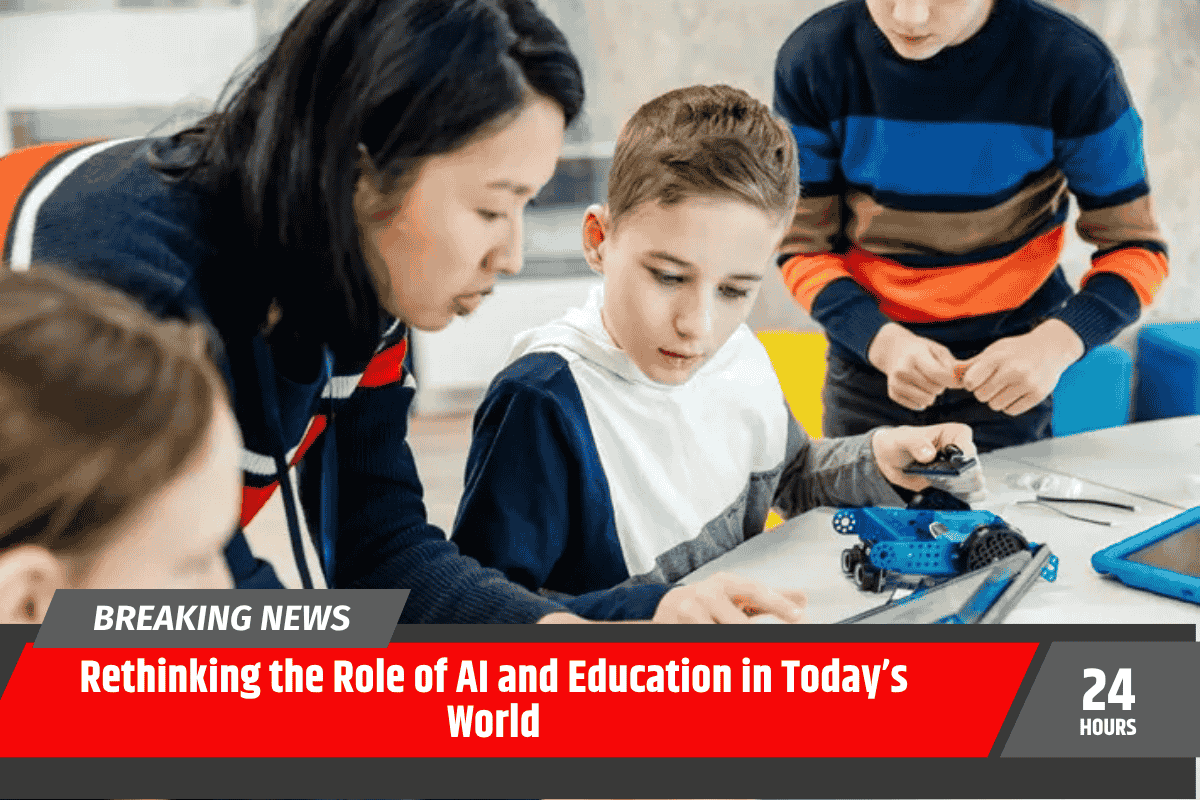Recently, many articles and discussions have raised alarms about college students allegedly using artificial intelligence (AI) to cheat on assignments.
Some have gone as far as to suggest returning to old-fashioned educational methods like blue book essays and oral exams. As a scholar in writing and education, I want to urge us all to take a step back and view these concerns with perspective.
The panic over new tools, like AI, affecting writing and learning is not a new phenomenon. Throughout history, each new advancement in technology has been seen as a threat to writing and intellectual growth.
The History of “Writing Crises”
In fact, the fear of deteriorating writing skills and the potential “death of writing” has been around for decades. In the 1970s, the Newsweek cover famously proclaimed that “Johnny Can’t Write.”
This fear was echoed in the late 1800s by E.L. Godkin, editor-in-chief of the New York Evening Post, who warned about the “illiteracy” of American boys, blaming street slang and popular novels for undermining writing quality.
But, contrary to these fears, no “golden age” of perfect writing ever truly existed. The narrative of a past era when everyone could write eloquently is a myth.
Today, students are still learners, and writing continues to be a challenging skill that evolves over time. In the face of new technological tools like AI, the solution isn’t to revert to old-school methods of essay writing and speeches but to find ways to embrace these tools while fostering deeper learning.
AI: A Tool, Not the Enemy
AI, including tools like ChatGPT, is a tool, not the problem. The real concern arises when students misuse these tools, often as a shortcut to avoid engaging with the material.
However, this is not new. Similar concerns arose when pencil erasers, spell check, and word processors were introduced—each seen as a tool that might make writing easier, but also lead to laziness or a decline in writing ability.
Yet, these tools became a part of the fabric of education because they helped students learn in different ways.
Instead of viewing AI as a threat to education, we should view it as an opportunity to teach students how to use technology responsibly.
Just as we teach students to use a calculator or a computer, we can teach them how to use AI in ways that help them learn, not just complete assignments.
The Real Challenges: Funding and Class Size
The larger issue in today’s higher education system is not the advent of AI but the overwhelming challenges posed by underfunding and overcrowded classrooms.
With budget cuts and fewer resources, many universities are forced to increase class sizes, which makes personalized, in-depth assessments like handwritten essays and oral exams impractical.
The current push for more technical degrees aligned with job titles is part of a larger trend of turning education into a factory that churns out workers.
But this misses the point that the future requires critical thinkers, innovators, and problem-solvers—not just people who can memorize facts.
As long as public education funding continues to decrease, these teaching conditions will persist, and simple solutions like returning to handwritten essays will fail to address the deeper issues.
The Need for an Evolving Educational Model
The role of education today must evolve. College and university systems must focus on preparing students for the world of work, which increasingly relies on technological literacy, adaptability, and critical thinking.
As writing remains a core skill for navigating the world, it must also adapt to modern tools like AI.
The goal is not to stop students from using technology, but to teach them how and when to use these tools effectively, ethically, and responsibly.
Rather than seeing AI as a threat, we should integrate it into the learning process.
For example, at Miami University, faculty have piloted an AI-informed Pedagogy Program that helps instructors explore the ethical implications of AI while also teaching students how to use it in their studies.
This approach encourages students to become more than just users of technology—they need to become creators and critical thinkers who understand the full implications of their tools.
The Bigger Picture: Redefining Education
Ultimately, the future of education in the U.S. depends on the vision we have for our graduates.
Higher education needs to prepare students not just for jobs, but for leadership roles in a rapidly changing world.
This requires a holistic education—one that encourages creativity, critical thinking, and problem-solving.
The pressure to turn universities into job factories aligned strictly with market demands has created an imbalance.
State funding policies often reward universities for focusing on immediate job outcomes, but the jobs of tomorrow will require well-rounded, adaptable individuals.
The education of tomorrow needs to emphasize application and innovation, not rote memorization or rigid, outdated systems.
For this transformation to take place, higher education needs significant support and funding. Education, like roads or libraries, is a public good, and it is essential that we invest in it properly.
As we face the reality of AI in education, the conversation should not be about avoiding technology but about creating learning environments that embrace the tools of today, while ensuring students are prepared to think critically and act creatively.
To move forward, we need to reimagine teaching and learning, focusing on empowering both students and faculty.
This requires not just embracing new technologies but ensuring that universities have the resources and support needed to innovate, to adapt, and to prepare graduates for a future that values creativity, critical thinking, and technological literacy.












